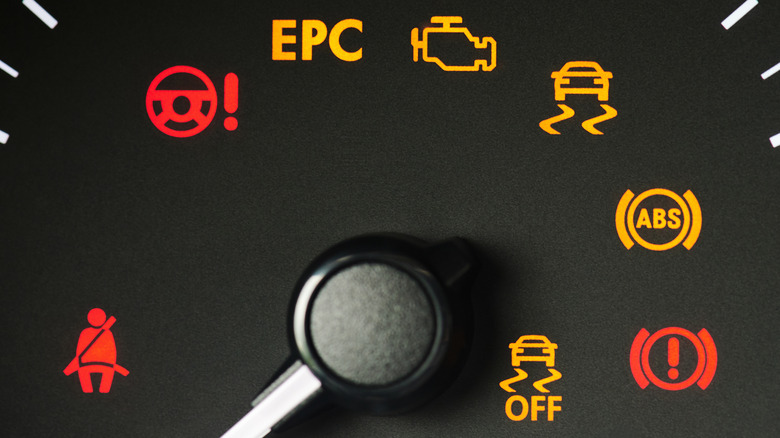What Does 'Limp Mode' Mean On A Car?
When you're behind the wheel of a car, there are several systems like the engine, electrical, fuel, and exhaust working in concert to get you from A to B. Many of today's premium vehicles are fitted with more than 100 sensors that monitor everything from tire pressure to fluid levels. However, you may not know that your vehicle is smart enough to not only detect mechanical and maintenance issues, but it's also capable of self-preservation. Limp mode is a setting that engages when the car's computer identifies a serious problem, then powers down some of the vehicle's systems and reduces performance. The car does this to help prevent further damage and alert you that a mechanic might be urgently needed.
In some cases, limp mode can be triggered by minor issues like a malfunctioning sensor or situations easily remedied using some DIY car maintenance tips that may save you a trip to the mechanic. At other times, however, there could be bigger trouble like engine misfires, a damaged clutch, or cooling system failure, which can dramatically increase temperatures under the hood. Since you won't immediately know what caused your car to go into limp mode, this situation should always be taken seriously.
What is it like to drive in 'Limp Mode'?
When your car initiates its self-preservation feature, you'll notice some immediate differences between normal driving and limp mode. The instrument panel will likely indicate a problem, and will show warnings such as a check engine light. There are many reasons why your check engine light may be on, but if you notice this warning and your vehicle engages limp mode, the problem could potentially be severe. Most vehicles also have a warning indicator in the form of the reduced engine power light or an error message indicating the car has initialized limp mode.
Other features, such as the radio, media touchscreen, and climate control system, may also shut off. By powering down these non-essential systems, there is less energy required from the engine and battery. It's also a great way to get your attention and notify you there is a problem if you happen to be stopped.
The car will also drive very differently in limp mode, not allowing you to go above a few thousand RPM. In addition, your car may refuse to change gears, only permitting you to drive slowly to a safe location away from traffic. By inhibiting the transmission from shifting, your car's speed is limited, which reduces strain on the engine. While this sudden reduction in performance capability can be alarming, it's not only helping to prevent damage to the car, but also injury to you or other drivers. Engine failure at high speed can be dangerous.

